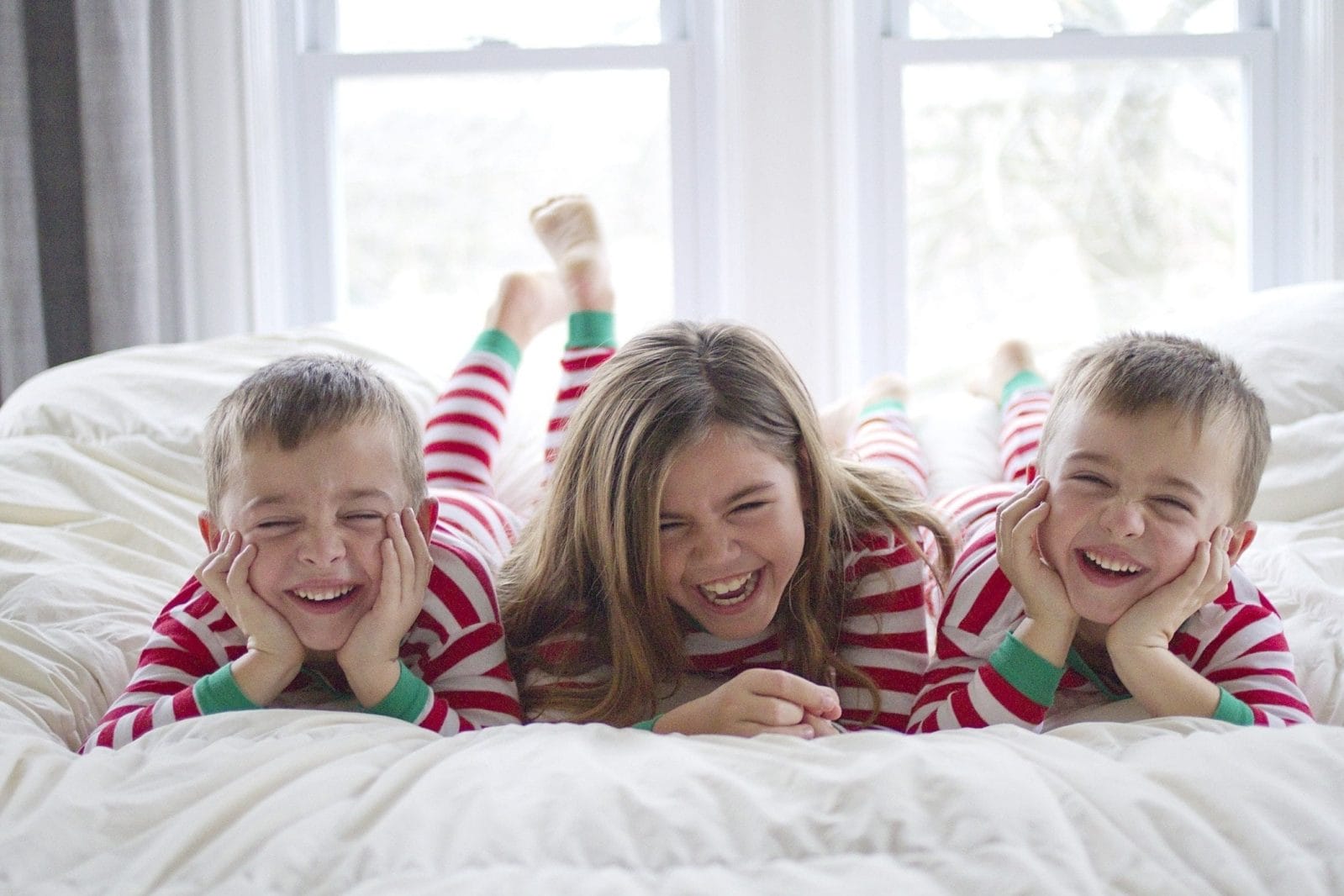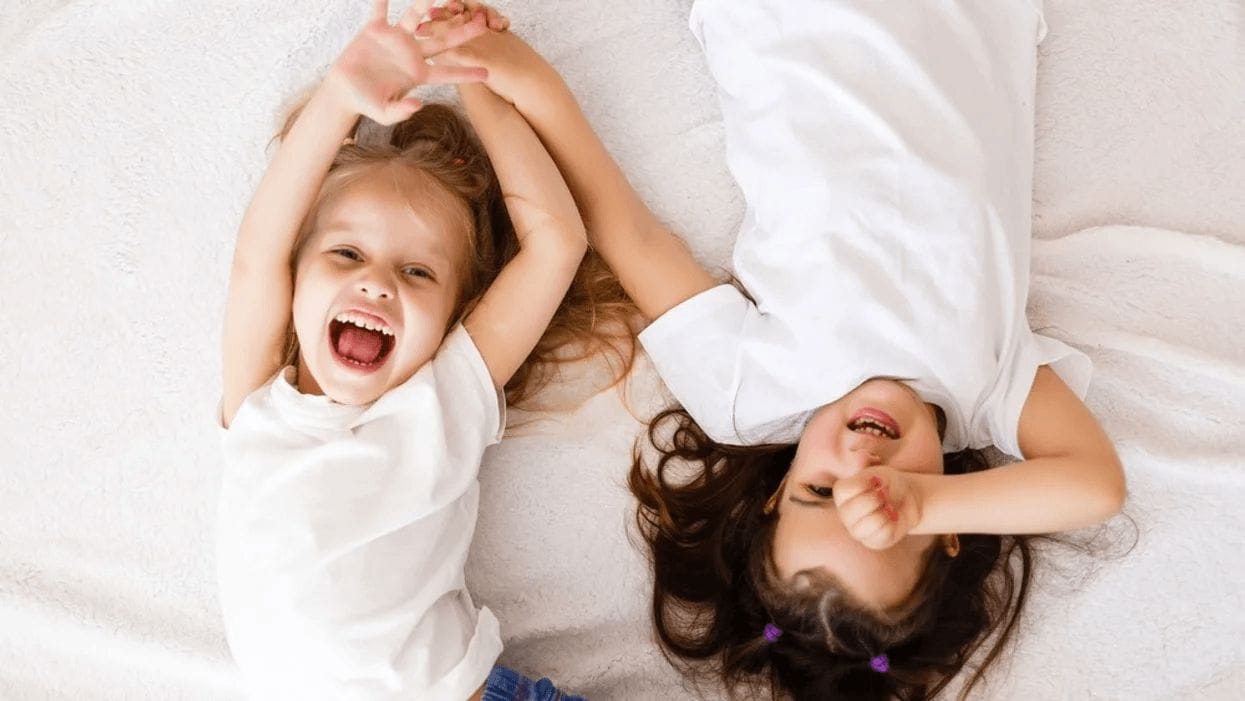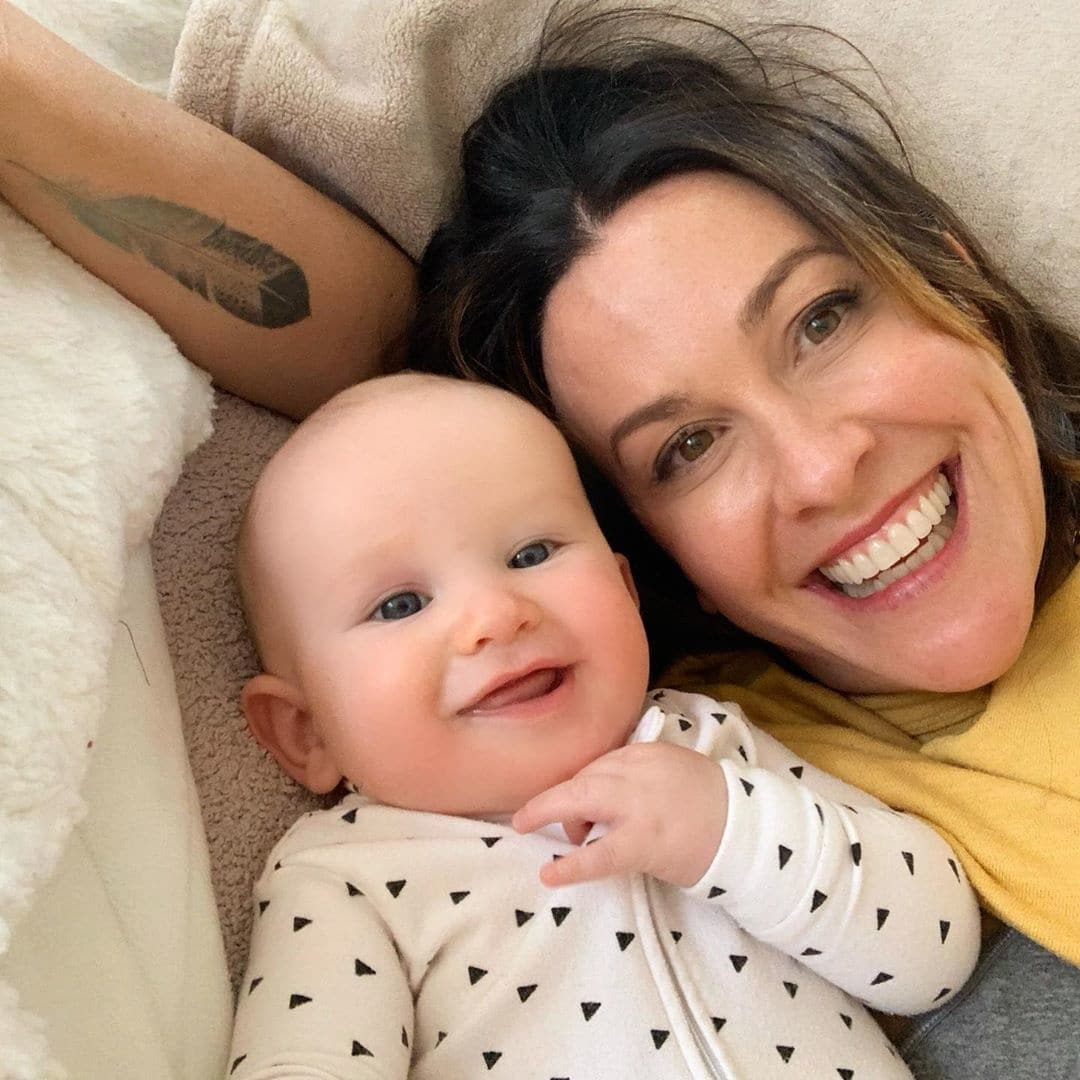It’s true: Giving your kids fewer toys at Christmas makes them happier

So, how many toys are too many?
Table of Contents
It’s a scenario many of us are all too familiar with: We spend weeks, if not months, carefully thinking about and selecting what will be the perfect, age-appropriate, intellectually stimulating, exciting-surprising-thrilling-you-name-it presents for our kids, anticipating their heart’s desires—and ours.
Then time and money are spent shopping. We think we’re done, and then one more inspiration, request or trendy must-have sends us back to the mall or internet to satisfy one more impulse. And then one more, because, why not, it’s Christmas, and we’re in the mood and our kids are so cute and we just want to see them happy.
Christmas morning arrives and the weeks of anticipation are finally fulfilled amidst a flurry of ribbons, paper and excitement. There are squeals and smiles and sometimes tears. And all is well… for a while.
But the novelty wears off even on the shiniest of trinkets, and soon many are forgotten. Our kids wind up bored…in a house full of toys.
You might feel little emptier in the aftermath, and wonder, was it worth it?
One measure of happy kids on Christmas morning is a fully loaded Christmas tree. But there’s a lot of evidence that suggests that giving your child fewer toys at Christmas is actually a better marker of their happiness in the long run.
Related: Boredom builds your child’s resilience and creativity
Kids need lots of quality play to develop fully
Research says that through play, children learn to interpret the world around them, enhancing the development of their cognitive, emotional, social and physical skills, and their subsequent health and well-being along the way. Additionally, play-based learning prepares children for academic readiness and success.
In a recent study at the University of Toledo, Ohio, researchers hypothesized that “an abundance of toys reduced the quality of toddlers’ play, and that fewer toys will actually benefit children in the long-term.”
In the study, 36 toddlers played for half an hour with either four or 16 toys. Toddlers playing with 16 toys spent less time playing with each toy, moving from toy to toy more frequently.
Related: 35 sensory play activities to stimulate your toddler’s beautiful brain
“During toddlerhood, children develop, but may not have mastered, higher level control over attention. Their attention, and therefore their play, may be disrupted by factors in their environments that present distraction. The results of the present study suggest that an abundance of toys may create such a distraction,” says lead author, Dr. Carly Dauch, in the journal, Infant Behaviour and Development.
When given only four toys to play with, the toddlers “played with each for twice as long, thinking up more uses for each toy and lengthening and expanding their games, allowing for better focus to explore and play more creatively—qualities that benefit children in the long term.”
Too many toys can be detrimental
Research has shown that “children who expect many and expensive gifts can suffer negative social and emotional ramifications that extend well beyond their childhood,” according to a study from the University of Missouri, Columbia. As adults, these children are “more prone to credit-card debt, gambling and compulsive shopping, feeding an insatiable hunger for more,” predisposing them to addictive behaviors.
In the project, “Der Spielzeugfreie Kindergarten,” or, The Toy-Free Nursery, German researchers conducted an experiment where toys were taken away from a Munich nursery for three months. The project was founded by Rainer Strick and Elke Schubert, public health officers who worked with adults who suffered from various forms of addiction.
Concerned about addictive habits that can start early in childhood, they wanted to show that children can play happily and creatively when they are not surrounded by toys.
One of the nurseries that has participated in this project for the several years is Munich’s Friedrich-Engels-Bogen nursery. There, teacher Gisela Marti says, “In these three months, we offer the children space and time to get to know themselves, and because they are not being directed by teachers or toys, the children have to find new ways to master their day in their own individual way.”
“Our studies show that giving children too many toys, or toys of the wrong types, can actually be doing them harm.”
Claire Lerner, Zero to Three
Unstructured play can improve social skills and focus
In a manner that has many elements of Montessori education, the children’s days are deliberately unstructured.
Left to their own devices, the children invent their own games and decide for themselves what to do. Marti found that once the children adjusted, their play became far more creative and social. “They loved acting and putting on a show, or pretending to be in a circus or on a train, but most importantly, all the time they were playing, they were learning to socialize,” surmised Marti.
Related: 50+ awesome experience gifts to give—instead of toys
Additionally, Marti discovered, the concentration skills of the children improved greatly, especially when drawing and painting. “Before the pens and paper were taken away from them, the children used to do one little squiggle on a piece of paper and then throw it away,” she says. “But when paper was given back to them they drew or painted all over it until there was not a patch of white paper left.”
“Our studies show that giving children too many toys, or toys of the wrong types, can actually be doing them harm. They get overwhelmed and cannot concentrate on any one thing long enough to learn from it,” says Claire Lerner, a childhood development researcher with Zero to Three—a nationwide U.S.-government run preschool educational program.
Lerner’s conclusions are reinforced by Michael Malone, professor of early childhood education at the University of Cincinnati, who found that parents should carefully manage their children’s access to toys. “More is not necessarily better. This is a myth that needs to be extinguished from Western suburban culture. Our work shows that having fewer toys is associated with less solitary play and increased sharing. Conversely, too many toys can cause a sense of overload,” says Malone.
How many toys are too many?
Experts hesitate to put a figure on the number of toys children should have, but a study by marketing researchers Bjorklund and Bjorklund indicates fewer toys are still best. In their study, 24 toddlers engaged in free play with three, 12, or 21 toys for 10 minutes. They found that the toddlers played longer with three toys than they did with 12 or 21 toys, implying that, “The value of providing a great number of toys is highly questionable.”
In his book, “ClutterFree with Kids,” author Joshua Becker supports the concept that fewer toys are better for children. Becker echoes the belief that playrooms with fewer toys promote creativity, help develop attention spans and teach kids about taking care of their possessions. “A child will rarely learn to fully appreciate the toy in front of them when there are countless options still remaining on the shelf behind them,” he said.
Becker notes other benefits to having fewer toys:
- Kids have better social skills. Kids learn to develop their relationships, and studies have linked childhood friendships to greater academic and social success during adulthood.
- Kids learn to take better care of things. When kids have too many toys, they tend to take care of and value them less since there is always another in the toy bin.
- Kids spend more time reading, writing, and creating art. Fewer toys gives kids the space to love books and generally discover and develop their talents.
- Kids become more resourceful. With only the materials at hand, kids learn to solve problems—a skill with unlimited potential.
- Kids argue with each other less. A new toy in a relationship is another reason to establish territory between kids. But kids with fewer toys are compelled to share more, collaborate, and cooperate.
- Kids learn to persevere. Kids with too many toys give up too quickly on a toy that challenges them, replacing it instead with another, easier one. In the process, they lose the opportunity to learn patience and determination.
- Kids become less selfish. Kids who get everything they want believe they can have everything they want, setting the tone for developing a more unhappy and unhealthy lifestyle.
- Kids go outside more. Kids with fewer toys look to the outdoors for entertainment and learn to appreciate nature, so are more likely to exercise, resulting in healthier and happier bodies.
Children throughout history and across cultures have had a great time playing with whatever materials were available to them—and the fewer the materials, the more creative kids have to be.
Give experiences instead of toys
Give experiences, not toys. Researchers from Cornell University found that, “People are more grateful, and even more generous, when they enjoy experiences rather than material gifts.” Psychology Professor Thomas Gilovich conducted several studies on the subject over decades and came to the conclusion that, “Happiness is derived from experiences, not things.”
Gilovich explains, “One of the enemies of happiness is adaptation. We buy things to make us happy, and we succeed. But only for a while. New things are exciting to us at first, but then we adapt to them. We soon become used to our possessions.”
Experiences can enhance kids’ lives more than toys can. Use the money you would have spent on extra toys for a trip to the zoo instead. Research has shown that memories of the experiences children have last far longer than the excitement of the toys they receive on Christmas morning.
Giving your child too many toys can lower their self-esteem if they define themselves by what they have, and not who they are.
In fact, studies show that children who have fewer material possessions, but positive relationships with parents and peers, score higher on self-esteem assessment tests. They also have fewer behavior problems and demonstrate more resilience in the face of obstacles than kids with overindulging parents.
But none of this matters to a 5-year-old on Christmas morning, when all the anticipation and presents are gathered beneath the tree, awaiting the big reveal.
To make sure this experience is joyful, start by laying the groundwork:
- Be intentional. Be proactive. Start early and keep it simple. Begin to build your traditions. Really think about it. Decide what Christmas will mean in your home, and chose toys and number accordingly.
- Choose only a few, special items that you know your child will really enjoy, now and later. Make sure the toys you choose have value beyond just novelty and trend—that way you know they won’t be forgotten soon after the novelty has worn off.
- Stay the course! As time goes on and your kids get older and are exposed to other families and their practices, resist the urge to give in to pressure to deviate from your vision of Christmas and gift-giving.
- Embrace your differences so you can be strong for your kids. Be prepared to answer your kids’ questions about why they don’t get as many or the same kind of gifts as their friends. Explain that it isn’t a measure of your love or Santa’s favor, but really one of choice. Assure them that every family has their own values and their own way of doing things, and that’s OK.
- Teach your children early that Christmas is about giving as much as it is about getting. Foster your child’s generosity by giving them the chance to know what it feels like to give—seek out opportunities in your community to give to families who have less, and let your kids choose and wrap the gifts. Or, take your kids to the store and have them help shop for food to donate to a local food drive or family shelter.
The thrill of a new toy may not last, but the joy of experiences can last a lifetime. Fewer, better gifts is better giving—but time is the best gift of all, and best given to those who mean the most to us.
A version of this story was originally published on Nov. 19, 2019. It has been updated.


































